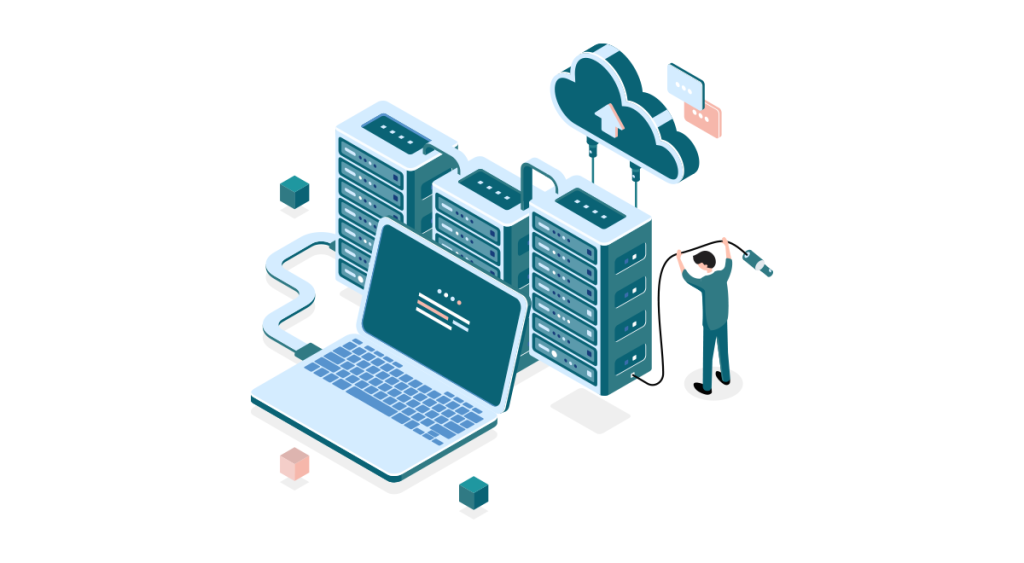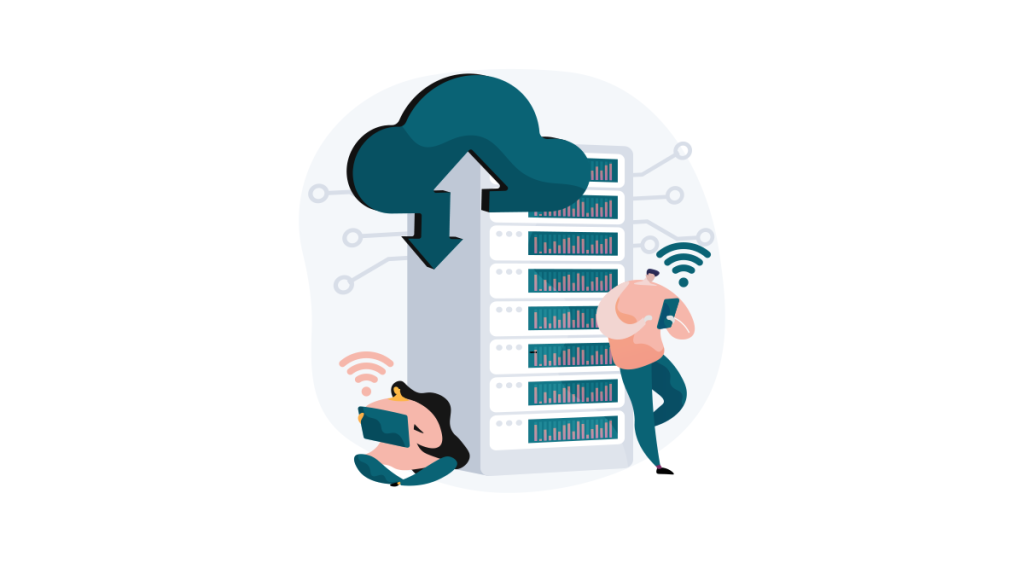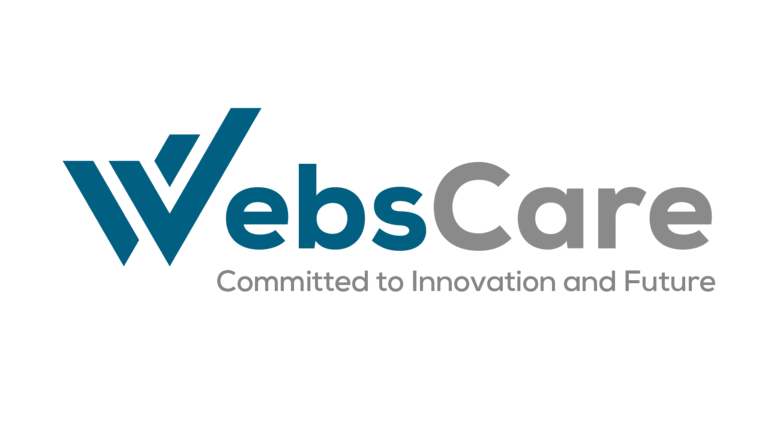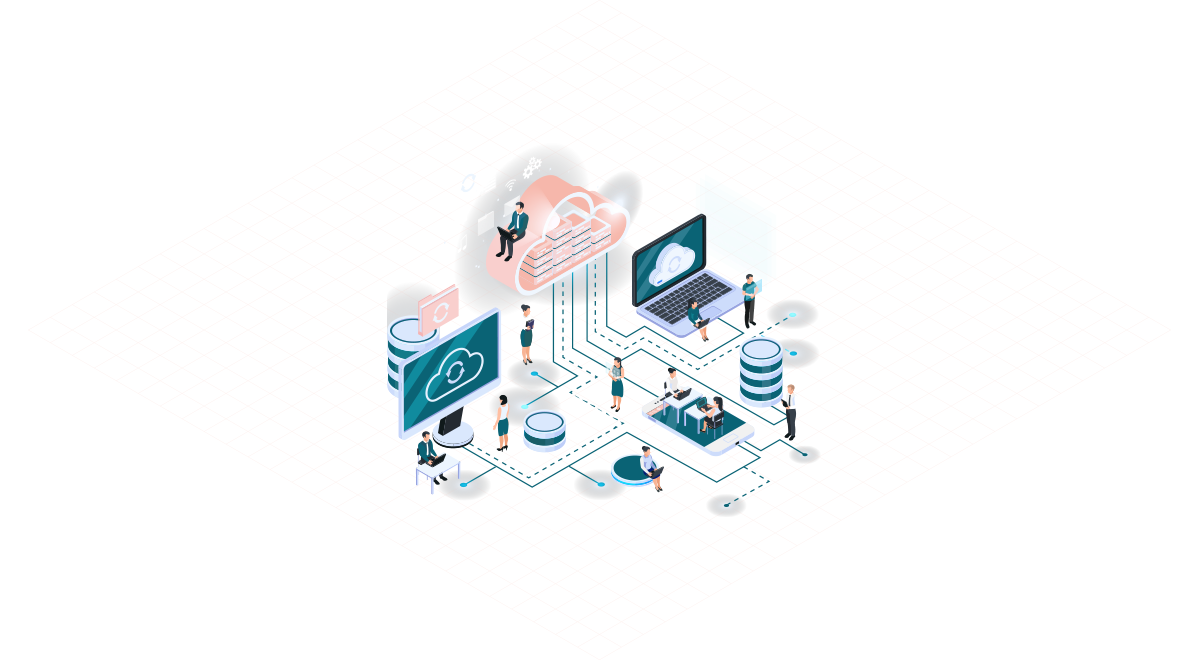Cloud computing has transformed the way software is developed, deployed and maintained. From accelerating development cycles to enabling scalable and cost-effective solutions, cloud technology has transformed modern software engineering. Companies worldwide are using cloud services to enhance collaboration, improve security and optimize resource management. This article explores how cloud computing is reshaping modern software development, highlighting its benefits, challenges and future implications. In this thorough article, our WebsCare research team has explained how Cloud Computing is transforming modern software development.
Looking for expert web development services? Get in touch with us today!
What is Cloud Computing?
Cloud computing is a technology that enables users to access computing resources such as servers, storage, databases, networking, software and analytics over the Internet instead of relying on local hardware. It offers on-demand availability, scalability and flexibility, allowing businesses and individuals to store and process data without maintaining physical infrastructure. Cloud computing operates on a pay-as-you-go model, reducing costs and improving efficiency. It is categorized into different service models including Infrastructure as a Service (IaaS), Platform as a Service (PaaS) and Software as a Service (SaaS), each serving specific computing needs. Popular cloud providers include Amazon Web Services (AWS), Microsoft Azure and Google Cloud Platform (GCP).

Rise of Cloud Computing in Software Development
Cloud computing has emerged as a dominant force in software development due to its flexibility, efficiency and scalability. Traditional on-premises infrastructure requires businesses to invest heavily in hardware and maintenance, whereas cloud services provide on-demand computing resources with minimal upfront costs. Leading cloud providers such as Amazon Web Services (AWS), Microsoft Azure and Google Cloud Platform (GCP) offer developers powerful tools and infrastructure, making software development more agile and efficient.
Key Ways Cloud Computing is Transforming Software Development
Here is a list of some key ways in which Cloud Computing is Transforming Software Development, mentioned as:

Faster Development and Deployment (CI/CD Pipelines)
Cloud computing supports Continuous Integration and Continuous Deployment (CI/CD), allowing developers to automate software testing, integration, and deployment. This speeds up development cycles and ensures that applications are released with fewer bugs. Cloud platforms like GitHub Actions, Jenkins and AWS CodePipeline provide CI/CD services, enabling an all-in-one code deployment across environments.
Scalability and Performance Optimization
Cloud computing eliminates the limitations of physical infrastructure, allowing applications to scale automatically based on demand. Auto-scaling and load-balancing features ensure optimal performance, whether an application has ten users or ten million. For example, AWS Elastic Load Balancer and Kubernetes dynamically allocate resources, ensuring seamless application performance.
Cost Efficiency and Resource Optimization
With cloud computing, businesses only pay for the resources they use, reducing operational costs. Instead of maintaining expensive on-premises servers, companies can leverage Infrastructure-as-a-Service (IaaS) and Platform-as-a-Service (PaaS) solutions to manage computing needs efficiently. Cloud providers offer pricing models such as pay-as-you-go and reserved instances, helping businesses optimize costs.
Enhanced Collaboration and Remote Development
Cloud-based development environments have made remote collaboration easier than ever. Tools like GitHub, GitLab and Bitbucket allow developers to work on shared codebases in real time. Plus, cloud-based Integrated Development Environments (IDEs) such as AWS Cloud9 and Google Cloud Shell enable developers to code from anywhere without setting up local environments.
Serverless Computing and Microservices Architecture
Cloud computing has popularized serverless computing and microservices architecture, making applications more modular, efficient and scalable.
- Serverless computing (e.g., AWS Lambda, Google Cloud Functions) eliminates the need for managing infrastructure, allowing developers to focus solely on code.
- Microservices enable applications to be broken into independent services, improving agility, fault tolerance and maintainability.
Security and Compliance Improvements
Leading cloud providers invest heavily in security, offering data encryption, identity access management (IAM) and compliance certifications (e.g., GDPR, HIPAA). Cloud services such as AWS Shield and Google Security Command Center help protect applications from cyber threats. By using cloud security tools, software companies can focus on development while ensuring compliance and data protection.
Challenges of Cloud-Based Software Development
Despite its advantages, cloud computing presents challenges that developers and businesses must address:
Dependency on Internet Connectivity
Cloud-based development requires a stable internet connection. Any downtime can disrupt workflows, making offline development environments essential for some teams.
| Challenge | Description | Solution |
|---|---|---|
| Security and Data Privacy Concerns | Storing data in the cloud raises concerns about data breaches, unauthorized access, and compliance. | Implement robust encryption, access controls, and regular security audits. |
| Vendor Lock-In | Switching cloud providers can be costly and complex due to proprietary technologies and dependencies. | Adopt a multi-cloud strategy to increase flexibility and avoid dependency. |
| Learning Curve and Skill Gaps | Developers must continuously upskill to work with evolving cloud technologies. | Invest in training and certifications to keep teams updated. |
Curious about how web development is shaping Pakistan’s digital future? Let’s read more about it.
The Future of Cloud Computing in Software Development
Cloud computing is expected to further shape the future of software development with emerging trends such as:

| Trend | Description |
|---|---|
| AI and Machine Learning Integration | Cloud-based AI and ML services (e.g., AWS SageMaker, Google AI) will automate development processes, improving decision-making and efficiency. |
| Edge Computing and Hybrid Cloud | Edge computing will reduce latency by processing data closer to users, while hybrid cloud solutions will combine private and public cloud benefits. |
| Increased Adoption of DevSecOps | Security will become an integral part of software development with DevSecOps, ensuring continuous security integration within the CI/CD pipeline. |
| Quantum Computing in the Cloud | Cloud providers are exploring quantum computing (e.g., AWS Braket, IBM Quantum), which could revolutionize problem-solving and computational power in software development. |
How to deploy a full stack web application? Let’s read more about it.
Conclusion
Cloud computing has dramatically transformed modern software development by improving scalability, efficiency, security and collaboration. By providing scalable infrastructure, cost-effective solutions and enhanced collaboration tools, it empowers developers to focus on building high-quality applications and delivering exceptional user experiences. Whether through serverless computing, AI-powered development or hybrid cloud solutions, the future of software development is undeniably tied to the cloud. As businesses continue to embrace cloud-based solutions, the future of software development will be increasingly agile, flexible, and driven by the limitless potential of the cloud.


